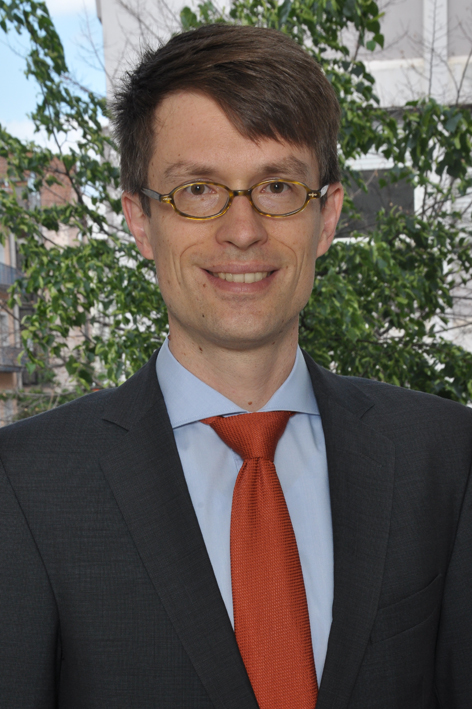Advanced materials: Design for safe use by nanomaterial similarity concepts, where appropriate
Dr. Wendel Wohlleben
– Wednesday 18th of November 14:00 – 15:00 CEST
Senior
Principle Scientist at BASF, Advanced Materials Research, Dept.
Material Physics, and Biologicals Research, Dept. Experimental
Toxicology and Ecology, Ludwigshafen, Germany
Biography:
Wendel Wohlleben
is Senior Principal Scientist for Characterization of Colloidal Systems
at BASF, Dept. of Material Physics, second affiliation with Dept. of
Experimental Toxicology and Ecology. Research projects on advanced
materials development and on the safety of materials containing or
releasing particles (h-index
46). Studied physics (minor: chemistry) at the University Heidelberg
and at the Ecole Normale Supérieure in Paris. PhD in 2003 from LMU
Munich with a biophysical thesis on energy harvesting in photosynthesis,
performed at the Max-Planck-Institute for Quantum Optics. Post-doc at
Physical Chemistry, University Marburg. Visiting scientist relations at
Dept. of Materials and Interfaces, Weizmann Institute, Rehovot and at
Harvard TH Chan School of Public Health, Boston.
Background, Motivation and Objective:
Next generation nanomaterials go beyond the well-known particle-based systems. They enable novel functionalities, and thus they may not be adequately addressed by existing regulation. But at the same time, their assessment should not increase animal testing. The ECHA review of next generation nanomaterials (ECHA 2019) has extensively relied on the industry-academia report from the NanoMat network.(Wohlleben, Punckt et al. 2017) In an even wider perspective, the OECD and national agencies now discuss if certain classes of advanced materials (DAMADEI 2013) pose specific safety concerns that require adapted testing methods, or potentially adapted regulation. Unusual and advanced materials are easier to introduce in the market with a safe innovation approach. In most cases, REACH or sector-specific regulations apply, but if not, the customer and consumers will inquire about the conditions safe use. As two examples, the photovoltaic market is favored by the EU Green Deal, but in spite of its vast potential, perovskite solar cell technology is still in the initial phase of commercialization (about $250million in 2018) in comparison to other mature solar technologies owing to several pressing concerns – safety being one of them. SbD optimisation and assessment is key to make the predicted 30% growth rates environmentally acceptable. The aerogel insulation market is very dynamic as well, predicted to reach $2.5billion by 2025. If the safe use at construction sites is demonstrated with SbD tools and case studies at TRL 6, then the current niche applications (around $600million in 2018) can grow via multicomponent aerogel insulation structures that are expected to cover 30 million square meters in the EU by 2025, driven by rising awareness of green building materials.
Statement of Contribution/Methods:
Here we apply methods established on nanoparticles and required in REACH registration of nanomaterials, e.g. surface reactivity, or metal leaching and transformation in relevant simulants. The assessment can compare the biological similarity of different materials as layed out in the nanoGRAVUR and GRACIOUS projects, developing grouping frameworks.(Wohlleben, Hellack et al. 2019) In a first extensive case study, we demonstrate the assessment of hazard by similarity and eventually categorization approach of 17 organic and 2 inorganic aerogels (functionalized chitosan, alginate, pyrolyzed carbon, silicate, cellulose, polyurethane). Aerosol releases are monitored in HEPA-filtered testing chambers. We then combine abiotic screenings with biosolubility, oxidative potential, in vitro reactivity and in vivo instillation. In a second case study, we explore the use of release and lifecycle assessment to advanced materials that contain potentially hazardous elements. Again, the similarity of releases can support risk assessment, and can guide iterative optimisation (i.e., safer-by-design processes).
Results/Discussion:
In the first case study, biosolubility was very limited except for some alginate aerogels. Oxidative potential, as by the FRAS assay, was very low except for one chitosan and pyrolyzed carbon, both of which were <10% the positive control Mn2O3. Five aerogels were further subjected to the alveolar macrophage assay, which revealed no in vitro cytotoxicity, although silicate and polyurethane induced increases in tumor necrosis factor α. When administered to the rat lung, polyurethane (0.3 to 2.4 mg) elicited dose-dependent but reversible enzyme changes in lung lavage fluid - finally supporting a category of many (not all) aerogels.
By all case studies combined, we exemplify how nanosafety concepts can be applied to specific concerns on advanced materials that contain or release nanostructures. It is obvious to expand this strategy to all materials releasing particles, including polymers releasing microplastics.
Some of the above similarity issues, including aspects of polymers, are already addressed in the BMBF project InnoMat.Life (2019-2021). A more comprehensive Safe-Innovation-Approach on multicomponent (nano)materials will be developed by H2020 HARMLESS (2021-2024).
Bibliography:
Marco Camboni, James Hanlon, Rodrigo Pérez García, Pete Floyd (2019)
A state of play study of the market for so called "next generation"
nanomaterials; European Union Observatory for Nanomaterials (EUON)
https://euon.echa.europa.eu/documents/23168237/24095696/190919_euon_study_next_generation_nanomaterials_en.pdf/d5ecd96d-e016-720a-54ef-574fe392c82a
Wohlleben, W., C. Punckt, J. Aghassi-Hagmann, F. Siebers, F.
Menzel, D. Esken, C.-P. Drexel, H. Zoz, H. U. Benz, A. Weier, M.
Hitzler, A. I. Schäfer, L. D. Cola and E. A. Prasetyanto (2017).
Nanoenabled Products: Categories, Manufacture, and Applications:
Protocols and Industrial Innovations. Metrology and Standardization for
Nanotechnology: Protocols and Industrial Innovations. E. Mansfield, D.
L. Kaiser, D. Fujita and M. Van de Voorde, John Wiley & Sons:
411-464.
DAMADEI (2013) Design and Advanced Materials As a Driver of European Innovation www.damadei.eu ISBN: 87-90904-67-2
Wohlleben, W., B. Hellack, C. Nickel, M. Herrchen, K. Hund-Rinke, K. Kettler, C. Riebeling, A. Haase, B. Funk and D. Kühnel (2019).
"The nanoGRAVUR framework to group (nano) materials for their
occupational, consumer, environmental risks based on a harmonized set of
material properties, applied to 34 case studies." Nanoscale 11(38):
17637-17654.